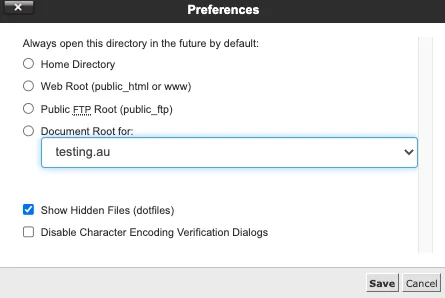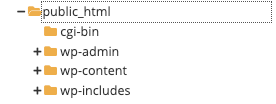Knowledge base article
Force HTTPS via .htaccess (cPanel)
Related articles
How to issue a Let’s Encrypt certificate
Other cpanel articles
A beginners guide to email spoofing
Accessing your site before changing DNS
An introduction to email authentication
Basic WordPress security and site management
Can I test out your services for free?
Check MySQL database table disk usage
Configure object cache with memcached and Litespeed Cache plugin
Configure spam filtering in cPanel
Configure your cPanel email account in Gmail
Connect via SFTP using SSH key authentication with FileZilla
Connecting to Serversaurus shared hosting via SFTP
Create a clone of your website
Create a SSH key pair and configure your SSH key in cPanel
Create a WordPress administrator via MySQL CLI
Create a WordPress administrator via phpMyAdmin
Create a WordPress cron task in cPanel
Create and manage email accounts in cPanel
Create Autoresponders in cPanel
Disable automatic WordPress updates via wp-config.php
Domain options for shared hosting
Download or restore individual files, directories or database backups with JetBackup
Emptying Trash, Junk and Spam files
Enabling PHP extensions, Changing PHP Version and Setting PHP Options
Export or Import a MySQL database via CLI
Go live with your WordPress staging website
Help! I need a backup of my cPanel-hosted website
Hide .html extension using .htaccess
How did my WordPress website get hacked? What do I do?
How to ensure website generated emails are delivered successfully
How to issue a Let’s Encrypt certificate
How to remove Site Software management
I can receive email but can’t send!
Install and configure Ghost blog in cPanel using Apache Reverse Proxy with mod_proxy
Install or manage complimentary SSL certificates with AutoSSL
Introduction to LiteSpeed Cache
Login to cPanel via the Client Portal
Manage DNS zones with the cPanel Zone Editor
Manual WordPress migrations in a nutshell
Migrate remote staging website to local hosting server
Migrate remote transactional website to local server
Migrating email from one POP/IMAP email account to another
My site and/or email service is down
Network Firewall (I can’t access my services on a non-standard port)
Pointing your domain to Serversaurus
Pointing your domain to Squarespace with cPanel
Prevent website generated spam with CAPTCHA
Push updates from a staging to production website
Reconfigure production website to subdomain
Recover your hacked WordPress website
Remove Wordfence firewall block via MySQL CLI
Secure your WordPress installation
Setting up email on your iPhone
Subdomains for test sites & more
The SLA – Best effort versus 99.9% versus 100%
Unable to renew certificate: The Let’s Encrypt HTTP challenge failed
Understanding CloudLinux resource limits
Update a WordPress website to use a new domain name
Update your WordPress username via phpMyAdmin
What exactly is shared hosting?
Why don’t you have unlimited plans?
WordPress install still shows Serversaurus “new customer” landing page
Do you have a valid SSL certificate installed and you're wondering why your website is still marked as insecure?
This occurs because some browsers default to requesting websites over HTTP protocol (rather than a secure HTTPS protocol). To ensure your website is served over a secure connection, you need to implement a force redirect so all traffic is redirected from HTTP to HTTPS.
This guide will teach you how to implement a force HTTPS redirect so all traffic visits your site over a secure connection
This article is for users who prefer using the cPanel, we have another guide for Terminal users who prefer to make these changes using CLI.
Please ensure you have the following requirements:
- A valid SSL certificate - Your website must have a active SSL certificate, if you don't have a SSL certificate installed, follow our guide on how to install a Let's Encrypt certificate before proceeding.
- Your cPanel login details - These were included in the original Welcome to Serversaurus or IMPORTANT: Hosting Documentation email which you should in your inbox otherwise follow these instructions on how to update your cPanel password.
Let's get started!
- Login to cPanel
- Using the search bar, locate the File Manager function
- Navigate to Settings in the left hand corner and ensure Show Hidden Files (dotfiles) is enabled and Save


- Select public_html from the list of directories on the left hand side

- Locate a file named .htaccess, if this file is not present, create the file using + File or if you have a .htaccess file, as a precaution use the Copy option to make a copy of the .htaccess, name the duplicate file .htaccess_backup

- Using the Edit option, add the below text to the beginning of your .htaccess file. Your .htaccess may already have line 1 & 2 present, in which case just add line 3 & 4 and Save
RewriteEngine on RewriteBase / RewriteCond %{HTTPS} !=on RewriteRule ^ https://%{HTTP_HOST}%{REQUEST_URI} [L,R=301]
Your website will now be loading securely over HTTPS!
Published June 17, 2022. Last updated November 30, 2023.
Can't find what you're looking for?
"*" indicates required fields